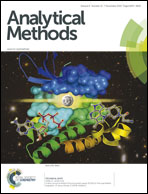A non-lethal SPME method for insect cuticular analysis by GC-MS
Abstract
In the present study a new method involving extraction by SPME fibers and storage in an organic solvent is described and tested in an ant species, Dinoponera quadriceps. The results demonstrate that the cuticular hydrocarbons trapped by SPME fibers can be efficiently desorbed from the fibers to hexane and stored for later analysis. This method can be used as an alternative procedure for the collection of samples in field studies. This technique is an effective non-lethal method for the extraction of cuticular hydrocarbons and was developed specifically for the long-term monitoring of individuals, as well as for situations in which gas chromatography equipment is unavailable at the sampling site.


 Please wait while we load your content...
Please wait while we load your content...